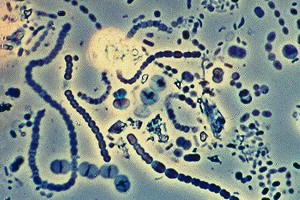Methylococcus capsulatus
A Microbial Biorealm page on the genus Methylococcus capsulatus
Classification
Higher order taxa
Kingdom: Bacteria Domain: Proteobacteria Phylum: Gammaproteobacteria Class: Methylococcales Order: Methylococcaceae Family: Methylococcus
Species
- Genus: Methylococcus
- Species: capsulatus
Description and significance
Methylococcus capsulatus is a methylotrophic gram-negative bacterium with coccus shape, live in multiple habitate, however, oxygen is the necessity for such cell to survive. Methylococcus capsulatus is also a thermophilic microbe which optically live in the temperature of 45C.

Genome structure
"The genome of M. capsulatus (Bath) comprises a single circular molecule of 3,304,697 bp."
Methylocuccus capsulatus a Gram-Negative microbe with linear structure.
Cell structure and metabolism
"Methylococcus capsulatus is a methanotroph (Methane-oxidising bacteria.) Methanotrophs are ubiquitous Gram-negative bacteria that can use the greenhouse gas methane as a sole carbon and energy source for growth, thus playing major roles in global carbon cycles, and in particular, substantially reducing emissions of biologically generated methane to the atmosphere."
"Methanotrophs are also able to metabolize or co-metabolize xenobiotic compounds, including chlorinated solvents such as trichloroethylene, and hence have potential as bioremediation tools."
Ecology
"Methylococcus capsulatus (Bath) is the first complete genome sequence reported from an obligate methanotroph. Genome analysis suggests the ability of M. capsulatus to scavenge copper (including a previously unreported nonribosomal peptide synthetase) and to use copper in regulation of methanotrophy, but the exact regulatory mechanisms remain unclear."
Pathology
How does this organism cause disease? Human, animal, plant hosts? Virulence factors, as well as patient symptoms.
Application to Biotechnology
Does this organism produce any useful compounds or enzymes? What are they and how are they used?
Current Research
Enter summaries of the most recent research here--at least three required
Edited by Ting Yuan Feng, student of Rachel Larsen at UCSD.
